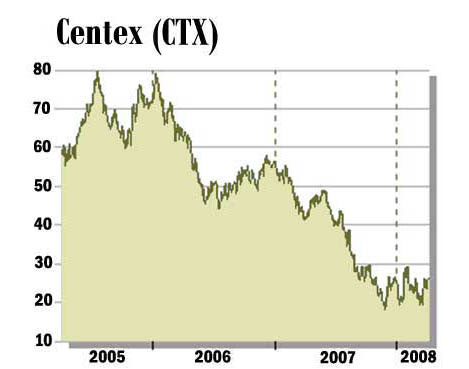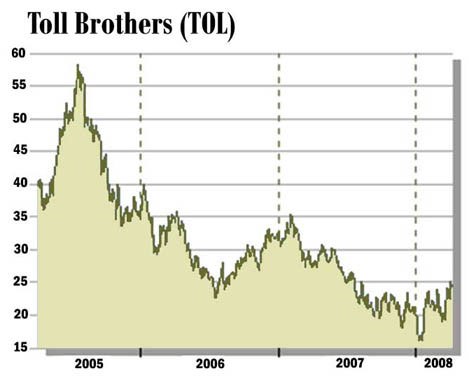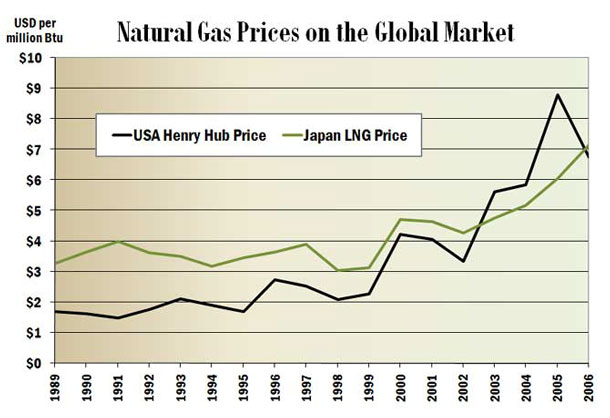 Casey Files: Casey Files:
This week in 'The Room'
David Galland
International
Speculator
written Apr 4, 2008
posted Apr 8, 2008
Welcome to "The Room"
The subscribers-only home page of Casey
Research.
Dear Readers,
This week finds me writing
from Room 2218 of the infamous Jekyll Island Club. The hotel's
adjective comes from a secret meeting held here in 1910 involving
some of America's most powerful men. Here's an official history
of that seminal event...
Soon after the 1907 panic,
Congress formed the National Monetary Commission to review banking
policies in the United States. The committee, chaired by Senator
Nelson W. Aldrich of Rhode Island, toured Europe and collected
data on the various banking methods being incorporated. Using
this information as a base, in November of 1910 Senator Aldrich
invited several bankers and economic scholars to attend a conference
on Jekyll Island. While meeting under the ruse of a duck-shooting
excursion, the financial experts were in reality hunting for
a way to restructure America's banking system and eliminate the
possibility of future economic panics.
The 1910 "duck hunt"
on Jekyll Island included Senator Nelson Aldrich, his personal
secretary Arthur Shelton, former Harvard University professor
of economics Dr. A. Piatt Andrew, J.P. Morgan & Co. partner
Henry P. Davison, National City Bank president Frank A. Vanderlip
and Kuhn, Loeb, and Co. partner Paul M. Warburg. From the start
the group proceeded covertly. They began by shunning the use
of their last names and met quietly at Aldrich's private railway
car in New Jersey. In 1916, B. C. Forbes discussed the Jekyll
conference in his book Men Who Are Making America and illuminates,
"To this day these financiers are Frank and Harry and Paul
[and Piatt] to one another and the late Senator remained 'Nelson'
to them until his death. Later [following the Jekyll conference],
Benjamin Strong, Jr., was called into frequent consultation and
he joined the 'First-Name Club' as 'Ben.'"
And so it was that the Fed,
that blight upon the U.S. dollar and instrument of unlimited
government power, was born. Some of you, learning in last week's
missive that Doug and I were heading to this place, wrote strong
words condemning the place as if it had a life of its own. Like,
perhaps, the set piece of one of those classic horror films.
But writing from the perspective
of an instant expert (as I have only been here three days now),
the hotel is grandiose and very pleasant in a Southern manor
sort of way. The food is excellent, the amenities are plentiful
and the weather far more agreeable than that gripping my hometown
in the Northeast. I would, however, caution you to avoid the
place in summer; in addition to high heat, the bugs are reputed
to be both fierce and relentless. Even now, in early spring,
the truth of that reputation is confirmed by the occasional no-see-um
enjoying a snack at my personal expense.
Apparently, the old club had
fallen into disrepair after World War II, when the money men
that founded the place, including J.P. Morgan himself, stopped
coming here in favor of the more refined holiday resorts of Europe.
Such disrepair, in fact, that it was closed for four decades
before eventually limping back into existence as a 4H camp and,
some have said, even a flop house. Thanks to a substantial infusion
of cash from the state of Georgia, or, more correctly, the taxpayers
of Georgia, the club and its grounds have been restored to their
former state of glory and are now very much up to code.
But why are Doug and I here?
As much as I wish it was pure holidaying, or even plotting to
replace the Fed system and returning to one that is actually
based on something more tangible than political whim, we are
here at the invitation from a friendly competitor, Porter Stansberry,
to attend his annual editors conference.
It has been an interesting
experience because Stansberry tends to focus on investment areas
we tend to avoid. That said, there is a solid contrarian streak
that flows through the organization, such as the one that has
some editors talking about homebuilders being a good buy just
now.
Homebuilders? Surely you jest,
I thought to myself as I listened to the presentation. But then,
Steve Sjuggerud, editor of the highly popular and widely read
Daily Wealth, discussed how, in a typical housing collapse, the
shares in the homebuilders will go down by as much as 75% to
90%, a level that would make it seem hard to get hurt. But the
more important thing is that when they rebound from those depressed
levels, they can go up by as much as 300% to 500%.
Consulting the ever-reliable
stock research tool on the CaseyResearch.com website, I find
that Steve has a point. Centex (CTX),
which is shown in the chart below and will be mentioned later,
is off by about 68%.

And the following chart is
from another of the nation's largest builders, Toll Brothers
(TOL), which is off from about $57 to $24... a loss of about
58%.

While I personally am of the
belief that the real estate that underlies these companies has
a long way to go before touching bottom... a topic we'll return
to momentarily, it is hard to argue with Steve's basic premise
that, at some point, the home builders sell at such a steep discount
that there is pretty much only one way they can move: up.
It is a classic contrarian
play and one to watch for. When the blood-letting has these stocks
down by 80% or more, which I think we'll see, you can assume
that pretty much anyone who is going to sell will have sold,
which, for the speculative minded, is the time to buy. Then sit
back and wait for the next upswing. It may take quite awhile
for the payoff, but provided the companies have the financial
ability to avoid bankruptcy - a matter for further and serious
investigation - in time the upswing will come and provide a big
payday.
The Trillion-Dollar Sure Thing
After falling as low as $887
earlier in the week, gold has come quickly back to $907 as I
write in the wee hours of Friday morning. Why the fall? Sometimes
it is hard to divine the minds of humankind, so I'm not really
sure. Misplaced optimism? Profit taking?
Even so, gold showed its spine,
returning quickly to the $900 level, a level which, as we have
recently discussed in this missive, may be the new base for the
yellow metal... a level below which people intuit that gold is
"cheap." Which it is.
Why? Because it is the U.S.
dollar that most people use when assessing the value of gold.
And the U.S. dollar is being increasingly put at risk by the
growing list of bailouts that are hastily engineered by the government
and all its various apparatchiks. During a phone call the other
day, our own Bud Conrad started tallying up all the money that
the government has applied or committed to the unfolding crisis
so far. The sum is now closing in on one trillion dollars.
Does that number concern you?
Does it surprise you? Does it make you, mouth agape, stumble
toward the nearest barkeep, your hand waving in a frantic attempt
to capture his attention so that he might provide a restorative?
I suspect not.
Thanks to our being inoculated
with a steady dose of large numbers, a number as huge as a trillion
probably only softly touches your individual consciousness. The
way, perhaps, that an acquaintance in this gentle clime might
helpfully brush a fallen magnolia blossom from the shoulder of
your white linen suit.
The impact should, however,
register more like a solid slap across your ruddy jowls delivered
by a southern belle after an imprudent remark encouraged by one
too many mint juleps.
But a trillion-dollar bailout,
just like a three-trillion-dollar war - or more correctly, in
addition to a three-trillion-dollar war -- carries with it consequences.
As an old and wise friend of mine now in his twilight repose
in Portugal likes to ungrammatically say, "There ain't no
such thing as a free lunch." And he's right, mostly.
A basic tenet of economics
has it correctly that if you flood the market with a large supply
of anything, the value of each successive unit must fall. Money
is no different, and monetary inflation will, as sure as day
precedes night, result in price inflation. And you don't need
me to tell you that the cost of pretty much everything at this
point is going up.
While the sort of price inflation
that eventually stirs the masses to action is still ahead of
us, there is little question at this point that it is inevitable.
Therefore, betting that interest rates will rise as lenders demand
compensation for the anticipated erosion in the value of their
money between the time it is lent and the time it is returned
to them, is as close to a sure thing - even a free lunch -- as
you can imagine.
In the past I have mentioned
those fairly rare occasions where Doug Casey, our illustrious
chairman and resident guru here at Casey Research, gets a certain
look in his eye and speaks with a certain tone in his voice that
indicates that he is issuing forth, oracle-like, a forecast that
invariably comes true. His view on the inevitability of interest
rates rising strongly over the next few years is delivered with
that same force of conviction. In fact, he is on the record,
as recently as yesterday morning, saying it is the single most
powerful trend he sees just now.
Personally, I have placed my
bets on that particular outcome and you might want to consider
doing so as well.
One of the
best ways to do so is with properly organized EuroDollar puts.
If you are a subscriber of the International Speculator
and want to re-read our write-up on that investment strategy,
simply access the March 2008 issue from the archives.
If you are not yet a subscriber
to the International Speculator, sign up today with our
3-month, 100% satisfaction money-back guarantee. Click here to
learn more and sign up now.
(There is a reason that this
publication is now in its 28th year, but me telling you and seeing
for yourself - without risk - are two different things.)
China on the Brink?
At our recent Scottsdale Crisis
& Opportunity Summit, I had an exchange with one of our many
interesting subscribers. In the interest of his privacy, and
because of where he calls home, I will call him only CG. He is
an international entrepreneur whose latest venture has led him
to take up residence in China for some time now.
In Scottsdale he told me that
he had translated some recent observations I had made in this
weekly column on the topic of China for his Chinese wife. His
wife, as he relayed it, said something to the effect of, "He
is exactly right. How does he know this?"
While it is always flattering
to have one's opinion thought worthy by those in the know, what
I found most interesting, and why I share this story here, is
that my comments were about the potential for civil unrest in
China. Not to be repetitious, but I think the topic important
enough to repeat the paragraphs which CG's wife found so revealing...
here they are:
After all, while many of the
world's economic observers fawn over China's remarkable progress,
the facts are simple. (a) The U.S. already has the infrastructure
in place that China is now trying to build; (b) China is run
by a cadre of corrupt communist comrades, not exactly a model
ripe for emulation by a thinking person; (c) they have over a
billion mouths to feed. Which is to say, any setbacks that cause
the aspirations of its large public to be disappointed could
result in social unrest and worse. (The rocketing cost of rice,
up almost 100% over the last year, may be a catalyst for such
unrest.)
Adding to the discomfort about
the potential consequences of social unrest, one only needs to
glance casually into the cupboard to find tightly packed examples
of the culture's apparent disdain for steadily beating hearts.
Reaching into said cupboard,
we pick up Barbara Tuchman's excellent Stillwell and the American
Experience in China to read her accounts of General "Vinegar
Joe" Stillwell's arrival in that country in the support
of Chiang Kai-Shek, as despicable a two-legged creature ever
to have wandered onto the human stage. In between other duties,
Joe had to restrain himself, and his men, from opening fire on
officers of Mr. Kai-Shek's nationalist army that would routinely
punish the loss of even so much as a single lice-ridden blanket
by a foot soldier with summary execution.
But as degraded as Chiang and
his fellows were, they were nothing compared to the big guy himself.
Based on readings on the topic, confirmed with an airplane seat
consultation with an academic who had made the study of such
things his life's work, Chairman Mao was reliably responsible
for the unnatural deaths of over 50,000,000 of his fellow countrymen.
To disabuse you of the notion
that China has reached a level of permanent stability, I would
like to share with you a YouTube video that our own Louis James
brought to my attention. While I have only watched part 1 of
the 8 parts available (I plan on ordering the full documentary),
it's enough to give you a better sense of the place than you'll
get from the mainstream media.
The documentary is called The
Tank Man and it is quite moving. View
it here.
One of the consequences of
a sense of unsettledness in that populous nation will almost
certainly be a move to stash away more gold, something they can
do more easily these days, thanks to a liberalization of gold
ownership that began in 2005.
How You Trade: The Casey Broker Survey
Recently we conducted a fairly
comprehensive survey of how you, our highly valued and much appreciated
subscribers, traded the resource stocks. Do you favor online
brokers or the full-service variety? Do those of you domiciled
in the U.S. buy on Canadian markets or over-the-counter? Who
are your favorite brokers? What are the best ways to save on
commissions? All these questions and more were addressed in the
survey, the results of which you can read by clicking
here.
[pdf]
We would also like to thank
those of you who took the time to take the survey... it offers
a valuable look at an important topic.
My Mother's House - Continued

Jim Turk of GoldMoney.com likes
to view the economy and markets, using as his lens grams of gold,
as opposed to the U.S. dollar, a fiction at this point. Apparently
a regular reader of these weekly ramblings, he weighed in on
the recent discussion of the current value of my mother's childhood
home, a photo of which she sent along since my first posting
on the topic. Here are Jim's comments:
Here's another way of looking
at the price of your mother's childhood home in Mont Clair, New
Jersey, which you note was purchased in 1929 for $45,000, sold
below that price almost 20 years later, and now valued by Zillow.com at $1.24 million.
Your comment that "the actual current value of the property
is likely closer to twice that value" because it was subdivided
into a number of lots is a pretty good estimate when viewed in
terms of real money.
The dollar in 1929 was defined
as 23.222 grains of gold, which meant that one ounce could be
exchanged for $20.67. So that 1929 price was really 2,177.1 ounces.
Gold today is trading around $930, which means the adjusted purchase
price of your mother's house, allowing for inflation and other
debasement of the dollar, is $2,024,703. It's not quite double
the Zillow.com estimate, but that could be because gold is still
relatively undervalued notwithstanding its rise in price the
past several years.
In any case, this example explains
why gold is money -- gold communicates value very effectively
over long periods of time, making it the ideal money for economic
calculation.
Regards
Jim Turk
(www.goldmoney.com)
While on the topic of real
estate, I'd like to share another email from one of our subscribers,
Frank, on a topic that I think you'll find of interest. As you'll
see, he touches on some recent transactions made by Centex, the
homebuilder mentioned earlier.
I am a subscriber to Big Gold
and International Speculator.
I am a real estate developer
based in Sacramento, CA and doing business throughout Northern
California. If you use this information, please do not use my
last name.
In the Sacramento and surrounding
area MLS, 51% of all listings are REO or short sale. 61% of all
actual transactions are REO or short sale. With a bulge of ARM
resets through July, the existing resale market should be soft
for the next fifteen months anyway.
The real blood bath is bulk
residential lots, both paper lots and finished lots. The privately
held builders are mostly headed to bankruptcy. Of the big residential,
privately held developers in my area, literally perhaps two survive
and all the rest go down. When I meet with a residential developer
who wants to "fire-sale" lots, there is no possibility
for a transaction because in most cases the debt exceeds the
land value. Which brings up the lenders. The lenders are not
foreclosing yet. Why? Are they not being leaned on by the regulators
yet? The attitude from the lenders so far is denial that they
have problems. Other banks have problems but not them..
Some of the public builders
are starting to dump lots. 30 days ago, Centex sold approximately
880 paper lots that they had paid $60,000,000 for three years
ago and had spent an additional $10,000,000 in entitlements for
a total of $70,000,000. They sold these for $8,000,000. $70,000,000
to $8,000,000 in three years! Centex sold 97 finished lots on
Friday, March 28, for $27,000 per lot. The cost to finish these
lots was approximately $40.000 per lot, therefore the residual
land value is less than zero. 12 months ago, Centex had over
$900,000,000 in unrestricted cash. Today they have just over
$65,000,000. Do you see a trend? I think the residential market
starts to come back in California in 2-3 years. The public builders
run out of lots over the next 18-24 months and California keeps
growing and there is continual if diminished housing formation.
Additional bad news is that
the retail and office markets are starting to roll over now.
These foreclosures have not started but will soon and will lag
residential by 12 months or so. Office vacancies are rising and
the big box retailers and grocers have all pulled out of the
market.
In a follow-up email, I asked
the author of that email, "How are you going to manage?"
To which Frank responded:
Thanks for asking about me.
I have no bad projects, one that is underperforming has NO DEBT!
That is how you survive as a developer. Plus, having turned $250,000
into $1,500,000 over the last eight years, thanks to your investment
publications plus Richard Russell's Dow Theory Letters, I know
I will survive just fine.
I would keep one thing in mind,
just about everybody is bearish on the real estate market and
that is when it will eventually turn. I say the bottom is in
2009, not 5-10 years out, and then we will start a slow process
of recovery but from a much lower base.
I've said it before, and I'll
say it again. We have the best subscribers in the world.
Energy Chart of the Week
Natural gas markets used to
be regional and disconnected. Not so long ago, the gas price
in Europe bore little relation to the gas price in the United
States and vice versa.
Pipelines, even just fifteen
years ago, were the only way that natural gas, on a mass scale,
was transported. But not anymore...
The rapid growth of the liquefied
natural gas (LNG) business has transformed natural gas into a
global commodity. Nations like Japan now rely on LNG supertankers
for the fuel to meet a significant chunk of their energy needs.
LNG is linking together natural
gas markets from around the world. It's allowed the tiny Middle
Eastern nation of Qatar, which has the world's third largest
natural gas reserves (after Russia and Iran), to become an energy
superpower.
Generally, the higher associated
costs of LNG (liquefaction, transportation, regasification) have
meant that the LNG price has been higher than the U.S. domestic
price. This trend flipped between 2003 and 2006 due to a sudden
uptick in LNG supply followed by Hurricanes Rita and Katrina,
which wiped out production in the Gulf of Mexico and drove up
domestic prices.

In the last two years, we've
seen LNG prices rise higher than Henry Hub prices once again.
Indonesia's state-owned Pertamina just negotiated a deal with
Japanese gas companies to sell LNG at over US$10/MMBtu until
2011. The Japanese are competing with Taiwan, South Korea, and
a fast-growing Chinese market, all of which are clamoring for
more LNG. When a minor earthquake took a Japanese nuclear power
plant offline, Japan had to scramble to pick LNG for its natural
gas-generated electricity, paying over US$20/MMBtu for some cargos,
proof that its deal with Pertamina is no stretch and might actually
look like a steal in a few years.
Another factor that few investors
realize is that LNG prices in Asia are tied to the Japan Crude
Cocktail, a benchmark for crude oil markets in the region. As
the dynamics of Peak Oil make themselves felt, LNG prices will
rise in tandem with oil prices.
Combine this with a growing
need for cleaner fuels, like natural gas, and it's clear that
the LNG market, and consequently LNG prices, are headed higher
for a long time to come.
[Note: Jeffrey Brown,
one of the faculty members at our Scottsdale Summit, is a petroleum
geologist. He gave a very compelling presentation on the concept
of the Export Land Model, which shows how declining production
combined with rising consumption can result in oil & gas
export countries rapidly reaching the point where they can no
longer export.
Among many interesting points
he made during his presentation, the most interesting was that,
based on current trends, Mexico will ship its last barrel
of oil to the U.S. in or around 2014... just 6 years from now.
This has, in my opinion, huge
implications. For one, Mexico is currently the second largest
source of oil for the U.S., so we will have to fight it out with
our international competitors to replace that oil. Secondly,
Mexico gets something like 65%
[Editor's note: corrected, 6.5%] of its GDP from its oil exports...
which means we could see some real trouble south of the border.
You can read some articles
by Jeffrey on the Export Land Model on EnergyBulletin.net, but
for ways to invest in this trend, there is no better source than
the Casey
Energy Speculator or, for the more active traders among you,
the Casey
Energy Confidential. The trend of higher oil prices is a
trend in motion that will stay in motion for years to come...
so getting positioned in the right plays now should pay off in
spades going forward.]
Miscellany
LAX Phyle. We have yet another brave individual
willing to help coordinate a get-together with other members
of the Casey "phyle" (yet-to-be-named)... this time
in Los Angeles. If you live in that area and would like to meet
up for a cup of coffee down at the corner store (or whatever
passes for same in a city of 3.8 million), drop Kristen a note
at phyle@caseyresearch.com and she'll help get you organized.
Just for laughs. Back in the old days,
I periodically used to have to suit up in coat and tie and wander
through the canyons of Wall Street and other haunts of Corporate
America where I would sit in endless meetings listening to oh-so
smart people wax forth on things like strategic planning and
"best practices."
It did not take me long, even
though I am a college drop-out, to ascertain that underneath
the suits were just human beings. Conversant in the latest nomenclature
and buzz words, yes, but human beings nonetheless. Someone kindly
forwarded me the following video, which is funny - especially
to those of you in the Southwest but on one level, it is a bit
close to the truth. Click here to
view.
Favorite headline of the week: "Some homes
worth less than their copper pipes"
And That, Dear Readers, Is That, for
This Week
I am now going to take advantage
of the weather and the good company to wander the local golf
links. I am fairly new to the sport, but enjoy learning it.
I usually close with a quick
check of the markets, but I started so early this morning in
order to rendezvous for the just-mentioned game of golf,
that the stock markets won't be open for another hour and a half.
Speaking of the stock market,
you may have wondered why I made no mention of the new "Paulson
Plan," but when you think of it, why bother? The final form
of same will only really arrive after many months and endless
political re-jiggering. In the end, the odds are good that the
plan, if there even is one, will bear little resemblance to the
current version being floated. Pay attention to the big trend,
and the rest of this stuff is just noise.
And with that, I take my leave
for a rare day of doing not much of anything at all.
David Galland
Managing Director
Casey
Research, LLC.
###
Casey Archives
321gold Ltd

|